
Data center products and services company Vertiv (NYSE:VRT) reported revenue ahead of Wall Street’s expectations in Q3 CY2025, with sales up 29% year on year to $2.68 billion. Guidance for next quarter’s revenue was better than expected at $2.85 billion at the midpoint, 0.8% above analysts’ estimates. Its non-GAAP profit of $1.24 per share was 24.9% above analysts’ consensus estimates.
Is now the time to buy Vertiv? Find out by accessing our full research report, it’s free for active Edge members.
Vertiv (VRT) Q3 CY2025 Highlights:
- Revenue: $2.68 billion vs analyst estimates of $2.59 billion (29% year-on-year growth, 3.4% beat)
- Adjusted EPS: $1.24 vs analyst estimates of $0.99 (24.9% beat)
- Revenue Guidance for Q4 CY2025 is $2.85 billion at the midpoint, roughly in line with what analysts were expecting
- Management raised its full-year Adjusted EPS guidance to $4.10 at the midpoint, a 7.9% increase
- Operating Margin: 19.3%, up from 17.9% in the same quarter last year
- Free Cash Flow Margin: 17.3%, up from 16.2% in the same quarter last year
- Organic Revenue rose 28.4% year on year vs analyst estimates of 24.1% growth (431.2 basis point beat)
- Market Capitalization: $66.75 billion
"Vertiv's third quarter results demonstrate our unique position in enabling the future of digital infrastructure," said Giordano Albertazzi, Vertiv's Chief Executive Officer.
Company Overview
Formerly part of Emerson Electric, Vertiv (NYSE:VRT) manufactures and services infrastructure technology products for data centers and communication networks.
Revenue Growth
A company’s long-term performance is an indicator of its overall quality. Any business can put up a good quarter or two, but the best consistently grow over the long haul. Thankfully, Vertiv’s 18% annualized revenue growth over the last five years was incredible. Its growth surpassed the average industrials company and shows its offerings resonate with customers, a great starting point for our analysis.
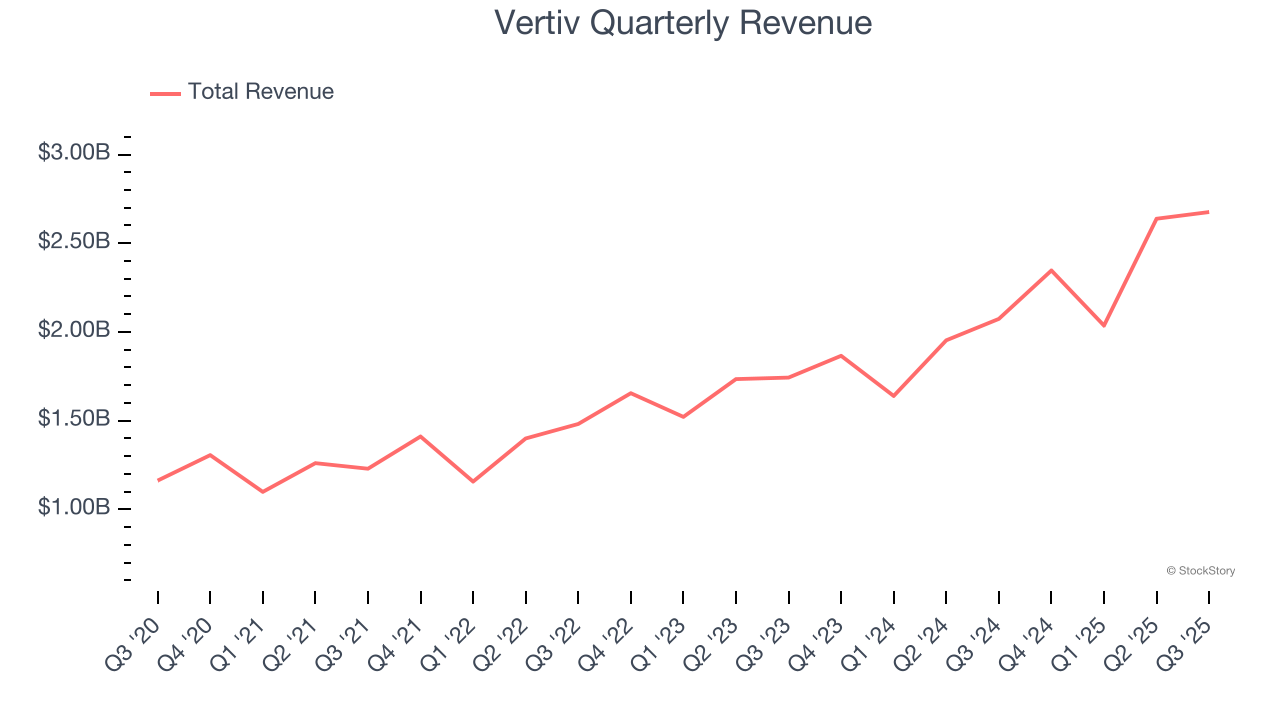
We at StockStory place the most emphasis on long-term growth, but within industrials, a half-decade historical view may miss cycles, industry trends, or a company capitalizing on catalysts such as a new contract win or a successful product line. Vertiv’s annualized revenue growth of 20.7% over the last two years is above its five-year trend, suggesting its demand was strong and recently accelerated. Vertiv’s recent performance shows it’s one of the better Electrical Systems businesses as many of its peers faced declining sales because of cyclical headwinds. 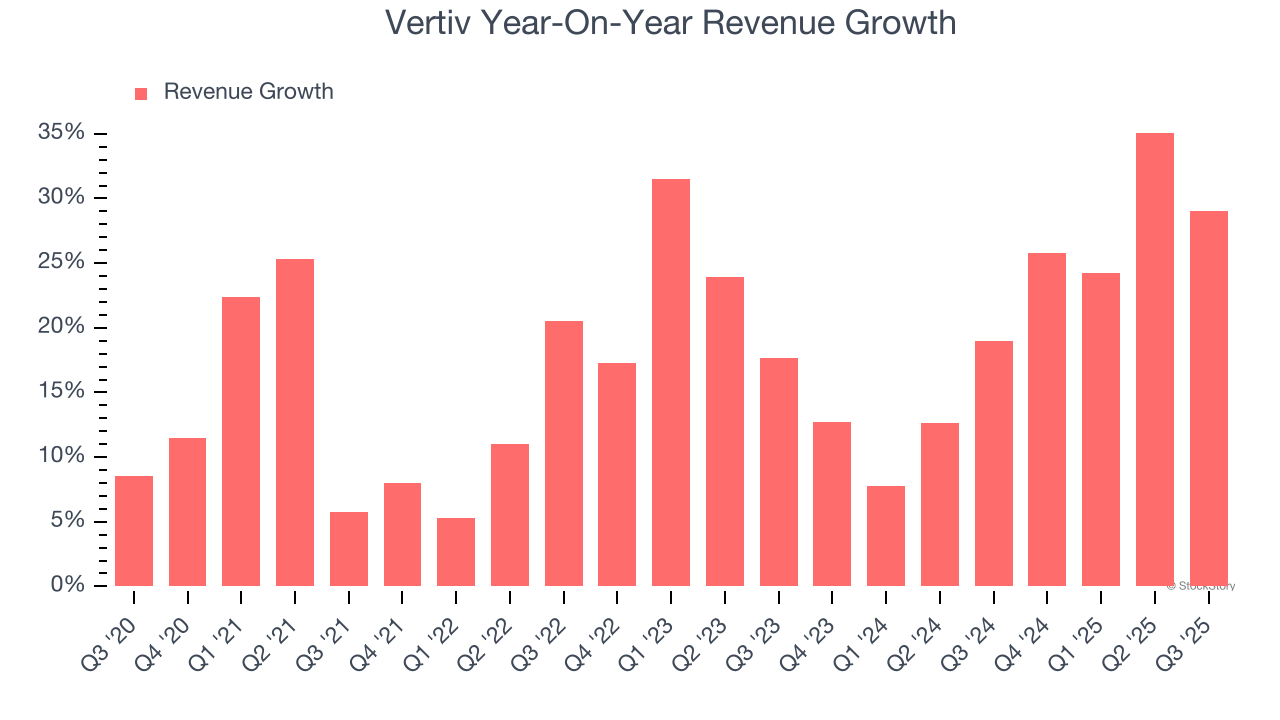
Vertiv also reports organic revenue, which strips out one-time events like acquisitions and currency fluctuations that don’t accurately reflect its fundamentals. Over the last two years, Vertiv’s organic revenue averaged 21% year-on-year growth. Because this number aligns with its two-year revenue growth, we can see the company’s core operations (not acquisitions and divestitures) drove most of its results. 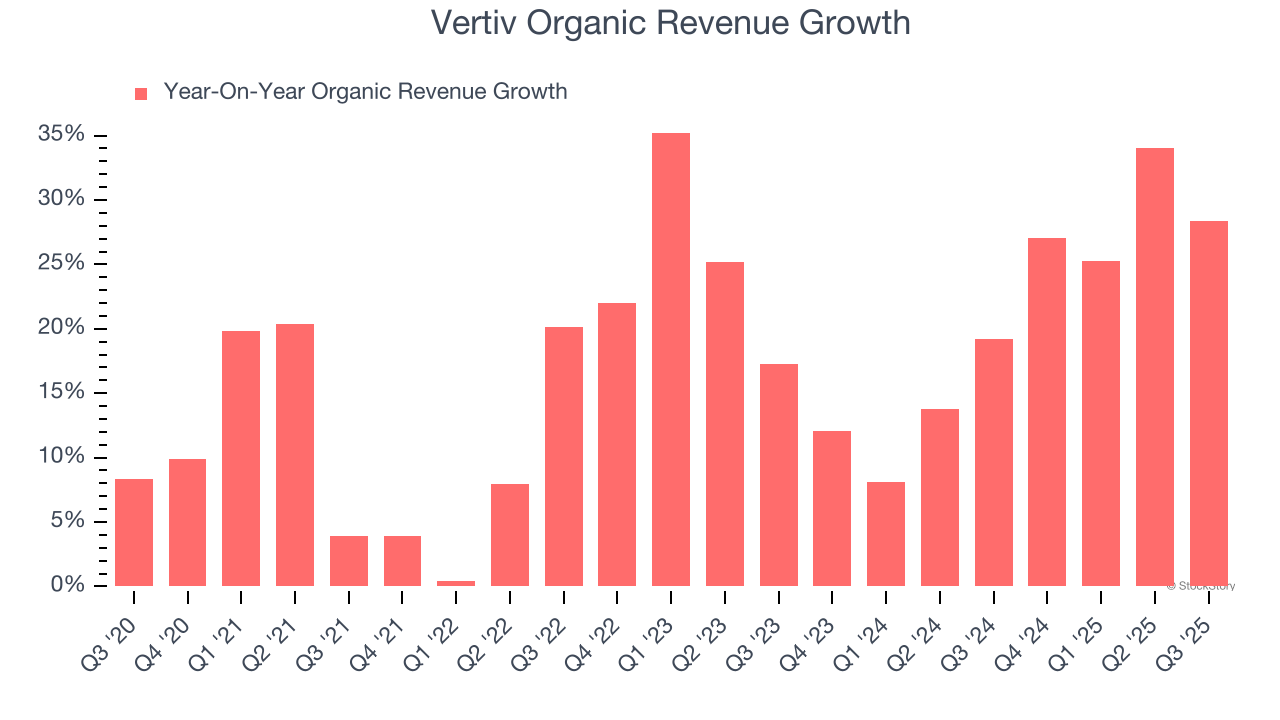
This quarter, Vertiv reported robust year-on-year revenue growth of 29%, and its $2.68 billion of revenue topped Wall Street estimates by 3.4%. Company management is currently guiding for a 21.5% year-on-year increase in sales next quarter.
Looking further ahead, sell-side analysts expect revenue to grow 16.7% over the next 12 months, a deceleration versus the last two years. Still, this projection is admirable and implies the market is forecasting success for its products and services.
Unless you’ve been living under a rock, it should be obvious by now that generative AI is going to have a huge impact on how large corporations do business. While Nvidia and AMD are trading close to all-time highs, we prefer a lesser-known (but still profitable) stock benefiting from the rise of AI. Click here to access our free report one of our favorites growth stories.
Operating Margin
Operating margin is one of the best measures of profitability because it tells us how much money a company takes home after procuring and manufacturing its products, marketing and selling those products, and most importantly, keeping them relevant through research and development.
Vertiv has been an efficient company over the last five years. It was one of the more profitable businesses in the industrials sector, boasting an average operating margin of 12%. This result isn’t too surprising as its gross margin gives it a favorable starting point.
Analyzing the trend in its profitability, Vertiv’s operating margin rose by 9.8 percentage points over the last five years, as its sales growth gave it immense operating leverage.
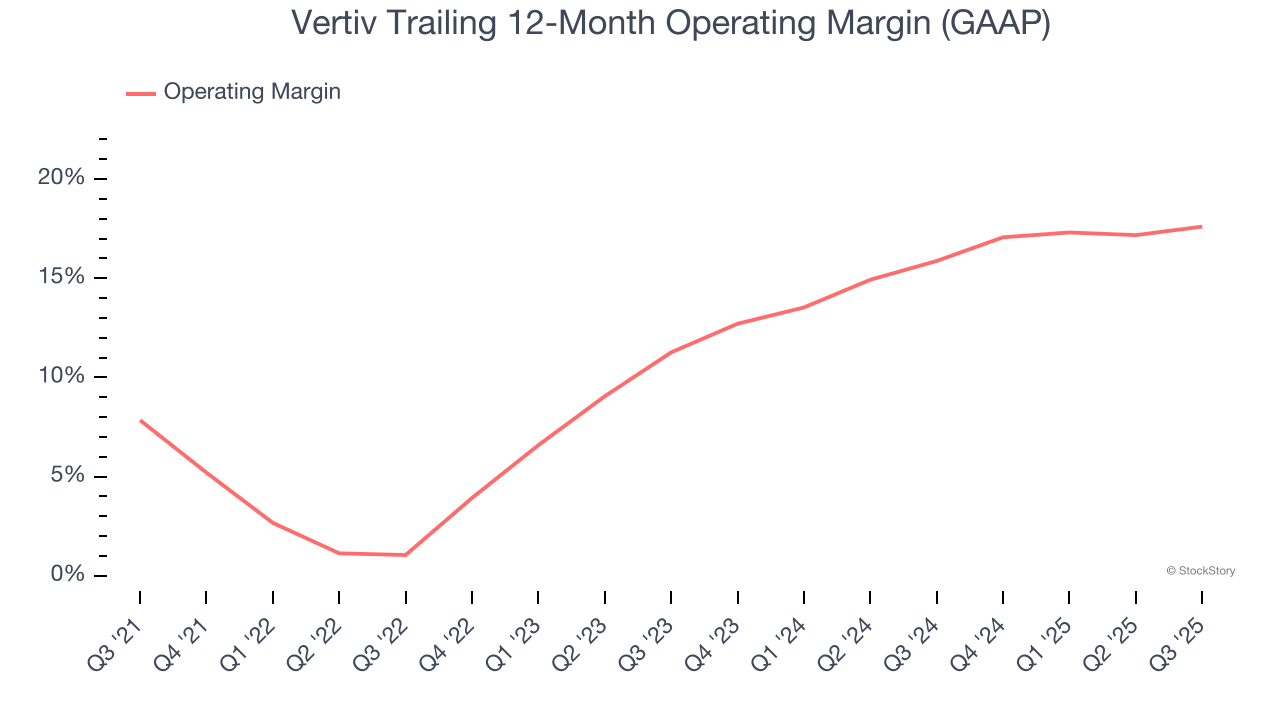
This quarter, Vertiv generated an operating margin profit margin of 19.3%, up 1.4 percentage points year on year. The increase was encouraging, and because its operating margin rose more than its gross margin, we can infer it was more efficient with expenses such as marketing, R&D, and administrative overhead.
Earnings Per Share
We track the long-term change in earnings per share (EPS) for the same reason as long-term revenue growth. Compared to revenue, however, EPS highlights whether a company’s growth is profitable.
Vertiv’s EPS grew at an astounding 43.2% compounded annual growth rate over the last five years, higher than its 18% annualized revenue growth. This tells us the company became more profitable on a per-share basis as it expanded.
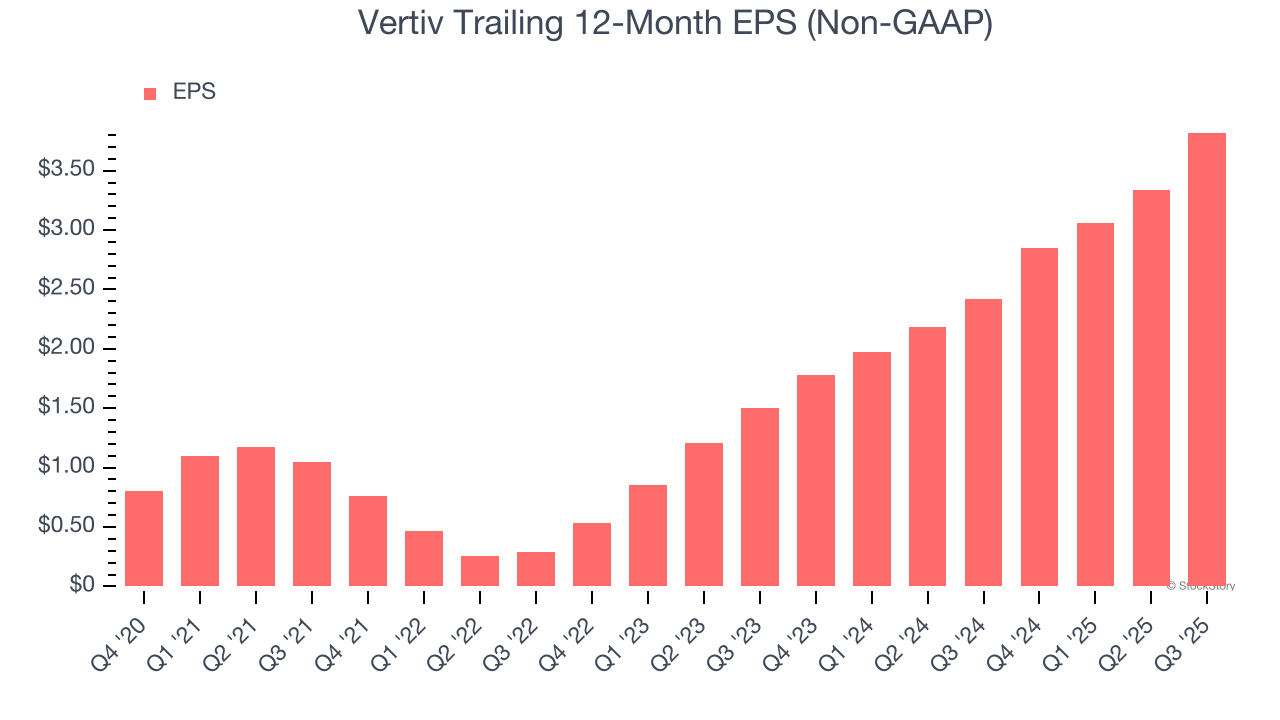
We can take a deeper look into Vertiv’s earnings to better understand the drivers of its performance. As we mentioned earlier, Vertiv’s operating margin expanded by 9.8 percentage points over the last five years. This was the most relevant factor (aside from the revenue impact) behind its higher earnings; interest expenses and taxes can also affect EPS but don’t tell us as much about a company’s fundamentals.
Like with revenue, we analyze EPS over a shorter period to see if we are missing a change in the business.
For Vertiv, its two-year annual EPS growth of 59.6% was higher than its five-year trend. We love it when earnings growth accelerates, especially when it accelerates off an already high base.
In Q3, Vertiv reported adjusted EPS of $1.24, up from $0.76 in the same quarter last year. This print easily cleared analysts’ estimates, and shareholders should be content with the results. Over the next 12 months, Wall Street expects Vertiv’s full-year EPS of $3.82 to grow 20.3%.
Key Takeaways from Vertiv’s Q3 Results
We were impressed by how significantly Vertiv blew past analysts’ organic revenue expectations this quarter, leading to a convincing EPS beat. We were also glad its Q4 revenue guidance and full-year EPS guidance trumped Wall Street’s estimates. Zooming out, we think this was a solid print. The stock traded up 8.6% to $190.01 immediately following the results.
Sure, Vertiv had a solid quarter, but if we look at the bigger picture, is this stock a buy? If you’re making that decision, you should consider the bigger picture of valuation, business qualities, as well as the latest earnings. We cover that in our actionable full research report which you can read here, it’s free for active Edge members.
